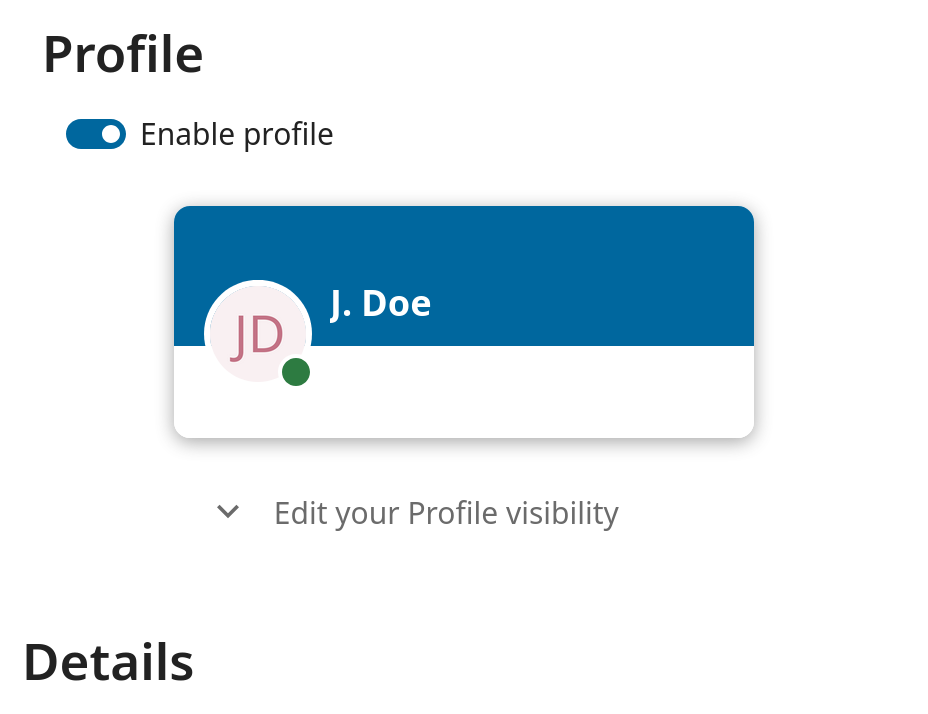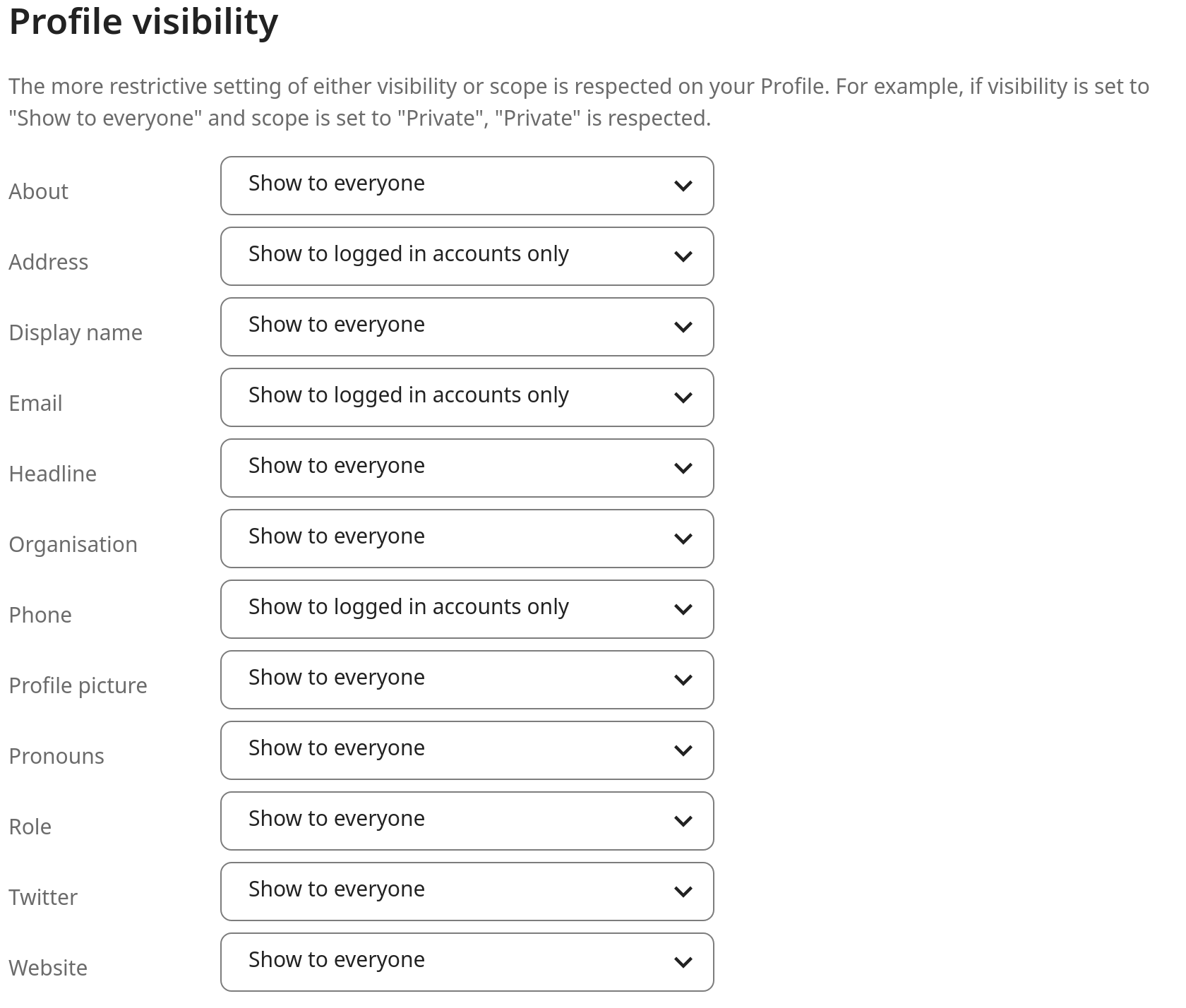Setting your preferences
As a user, you can manage your personal settings.
To access your personal settings:
-
Click on your profile picture in the top right corner of your Hub for Teams instance to open the menu

-
Clicking on Settings from the drop down menu opens the user preferences

Note
If you are an administrator, you can also manage users and administer the server. These links do not appear to a non-administrator user.
The options listed in the Personal Settings Page depend on the applications that are enabled by the administrator. Some of the features you will see include the following:
-
Usage and available quota
-
Manage your profile picture
-
Full name (You can make this anything you want, as it is separate from your Hub for Teams login name, which is unique and cannot be changed)
-
Email address
-
List of your Group memberships
-
Change your password
-
Using two-factor authentication
-
Setting your preferences
-
Choose the language for your Hub for Teams interface
-
Choose your preferred first day of the week
-
Links to desktop and mobile apps
-
Manage your Activity stream and notifications
-
Default folder to save new documents to
-
Your Federated sharing ID
-
Social sharing links
-
Hub for Teams version
Note
Available options and settings depending on your administrator’s configuration. If you are not able to change the password or the display name in your personal settings, please contact your administrator for help.
Restrict who can see your profile data
If the profile is enabled by your administrator, then your profile data can be read by other users and guest. To control who can see which information you can adjust the scopes already mentioned:
-
Private will only allow you and users you have added to your phone book to see the data
-
Local and above will also allow guests to see your data
To restrict the visibility even more you can disable guest from seeing your profile data by changing the profile visibility to logged-in users. On the personal settings you can find the button for profile visibility:
Which allows to configure the visibility for each profile attribute:




